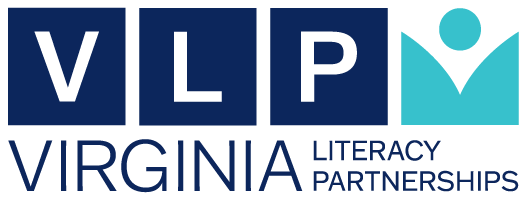Background
State-wide screening for early signs of reading difficulties has occurred in the Commonwealth of Virginia since 1997 and is guided under the legislative mandate called the Early Intervention Reading Initiative (EIRI; 1997 Virginia Acts of Assembly, Chapter 924, Item 140; http://leg1.state.va.us/cgi-bin/legp504.exe?971+bud+21-140). EIRI requires that students attending public school in Virginia are screened for signs of reading difficulty at six mandatory timepoints across K-2 (fall and spring of Kindergarten, fall and spring of first grade, fall of second grade, and spring of second grade for students who are not exempt because of high performance). Additionally, testing in the fall of third grade is mandatory for students who receive intervention over the summer or who are new to Virginia Public Schools.
State-wide screening under EIRI is implemented through a partnership between Virginia Literacy Partnerships (VLP) at the University of Virginia (UVA) and the Virginia Department of Education (VDOE). As part of this 20-plus year partnership, UVA provides VDOE with a series of screening tools called the Phonological Awareness Literacy Screener (PALS) suite, including PALS-K and PALS 1-3. VLP also provides the Commonwealth a preschool assessment called Pre-K Language & Literacy Screener; however, this tool is not used as a formal screening tool, nor is it used under EIRI, but is funded under a separate initiative related to the Virginia Preschool Initiative (VPI).
This state-supported approach to screening under EIRI involves the use of the PALS screening tools through the UVA-run PALS data and resource portal. This approach has been adopted by 130 of 131 school divisions in Virginia, serving approximately 1,100 schools and 18,000 educators, and is used to screen approximately 260,000 students annually. The PALS data and resource portal is also the gateway for other state-wide assessments, including the Virginia Kindergarten Readiness Program (VKRP), designed to measure young students’ school readiness. The PALS data and resource portal provides VKRP user management and offers some shared technology infrastructure to help streamline the assessment process for educators. Further, the PALS tool is the literacy assessment within the VKRP school readiness battery; although funding for PALS and administration of PALS is independent of the VKRP funding and state partnership, the two are highly related and collaborate.
Virginia Literacy Partnerships at UVA leads data collection, administration management, data management and reporting, and related professional outreach and support related to the use of PALS in Virginia for instruction and intervention. Although the EIRI legislative mandate for screening only requires six timepoints of assessment across K-2, the majority of schools in Virginia use the PALS assessment tools twice a year, and many use the PALS tools up to three times annually (fall-, mid-year, and spring). VLP provides formal support to these three administrative windows, as well as provides year-long support to educators through a technical assistance hotline (email, phone, chat) and professional development opportunities through synchronous and asynchronous platforms.
The result of EIRI screening in Virginia is directly linked to the provision of state-dollars in support of early intervention. EIRI requires that schools provide 2.5 hours of instructional intervention per week for every child found below the screening threshold (i.e., PALS benchmark) within a mandatory screening window. State funding in support of this intervention is offered and directly linked to the number of students in a division who fall below the PALS benchmark (or below the screening threshold for any other VDOE-approved screening tool). State allocation of EIRI intervention dollars is also dependent upon the provision of a local match (based on a sliding scale of ability to pay determined by the Virginia Department of Education). The nature of this intervention varies locally and the legislative requirements for and VDOE guidance around intervention allow for a variety of models, ranging from specialists to trained voluntary tutors to computer-based intervention programs.



